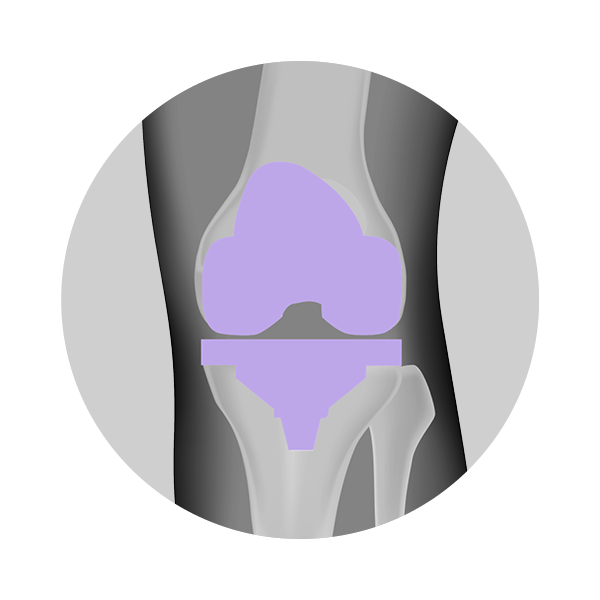
What are the different types of knee surgery?
Knee surgery overview
Types of knee replacement surgery
Knee replacement surgery may be divided into two main categories: partial and total. Partial knee replacement surgery is minimally invasive with a smaller incision, and only the damaged bone and cartilage are removed. Total knee replacement surgery removes all underlying bone and cartilage from the knee joint, regardless of its health.
Partial vs. Total Knee Replacement
Partial/Uni-compartmental knee replacement
At UNOVA Hip & Knee, we’ve perfected the art of the partial knee replacement. Using advanced surgical techniques and technology, we are able to personalize the procedure and the implant, optimizing each individual patient outcome.
Partial or uni-compartmental knee replacement resurfaces only the damaged bone and cartilage of the knee. The procedure is minimally invasive and allows for knee ligaments, tendons and muscles to be left in place.
For more details on our involvement in the advancement of outpatient partial knee replacement, read below.
Total knee replacement
Total knee replacement resurfaces all the bone and cartilage of the knee regardless of whether it is damaged or normal.
The procedure involves removing the anterior cruciate ligament and lengthening the medial and lateral collateral ligaments to achieve balance. This leads to up to 30% of total knee patients being dissatisfied with their joint replacement.
For details on how the surgeons at UNOVA Hip & Knee Center have overcome this total knee paradox, read below.
Advancement of
partial/uni-compartmental knee replacement
The surgeons of UNOVA Hip & Knee Center have been instrumental in the development of significant advances in partial knee replacement surgery over the past 20 years. They have made significant contributions to the development of patient evaluation and selection criteria, surgical technique, and instrument development as well as implant research and development. They are considered to be national and international thought leaders in Partial Knee Replacement surgery having trained surgeons from Italy, Spain, Switzerland, France, Germany, South Africa, and at numerous universities across the United States.
The minimally invasive partial knee replacement is designed for patients who have severe arthritis of the knee that have not found relief with standard non-surgical treatments, such as NSAIDs, steroid injections, strengthening exercises, and weight loss. When you feel that you have exhausted your conservative treatment options and your knee pain is keeping you from the activities you love, then partial knee replacement surgery may be considered. For the treatment of severe arthritis of the knee with bone-on-bone contact in one compartment, a partial knee can be your total solution.
Advantages of partial knee replacement:
Shorter operative time
Fewer complications, therefore considered safer
Speedier recovery and return to normal activities
Preservation of ligaments, tendons and muscles
Smaller incision, therefore minimal scarring
Retain normal joint movement
Fewer post-operative restrictions
Total knee replacement:
The kinematic alignment approach
In a total knee replacement, all of the cartilage and the underlying bone is removed from the knee joint regardless of whether it is diseased or not. The Anterior Cruciate Ligament (ACL), is always removed, while the Posterior Cruciate Ligament (PCL) is removed 60% of the time. These are the main stabilizing ligaments of the knee and are also responsible for the normal rotation of the knee as it bends and straightens. In a total knee replacement, a metal and plastic implant is inserted to replace all the bone and cartilage that is removed, and reestablish a smooth gliding surface.
IF a total knee replacement is necessary, UNOVA Hip & Knee Center surgeons use the kinematic alignment approach. This approach allows the surgeon to resurface arthritic or damaged knees through a technique that replicates the knee’s natural pre-diseased alignment and orientation. The insertional technique utilizes special instruments that position the knee in the most natural position, thus eliminating the need for ligament releases to achieve balance. The use of the sphere medial pivot knee implants reestablishes the rotation of the knee in flexion and extension that was lost by removing the ACL. This combination of procedure and implant allows the knee to move through the range of motion the way nature meant. Patients who have had this after conventional total knee replacement say it feels more like a normal knee and less artificial.
Advantages of kinematic alignment and the medial pivot total knee replacement:
Speedier recovery and return to normal activities
Preservation of ligaments and tendons
Retain normal joint movement
Knee feels more “natural",” according to patients







